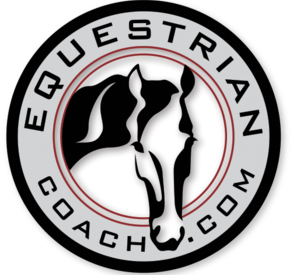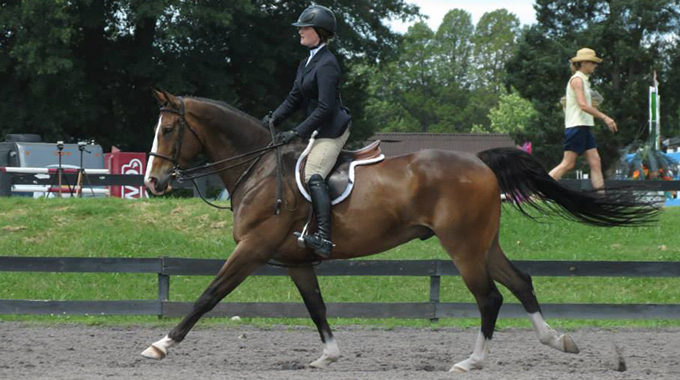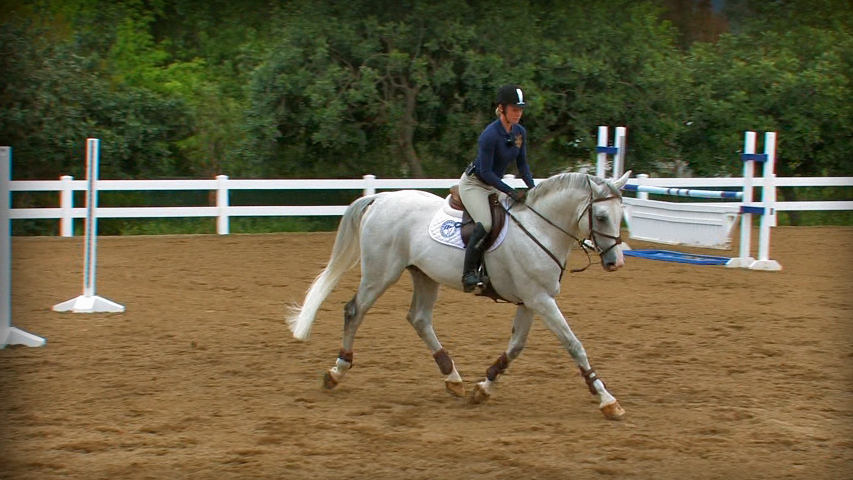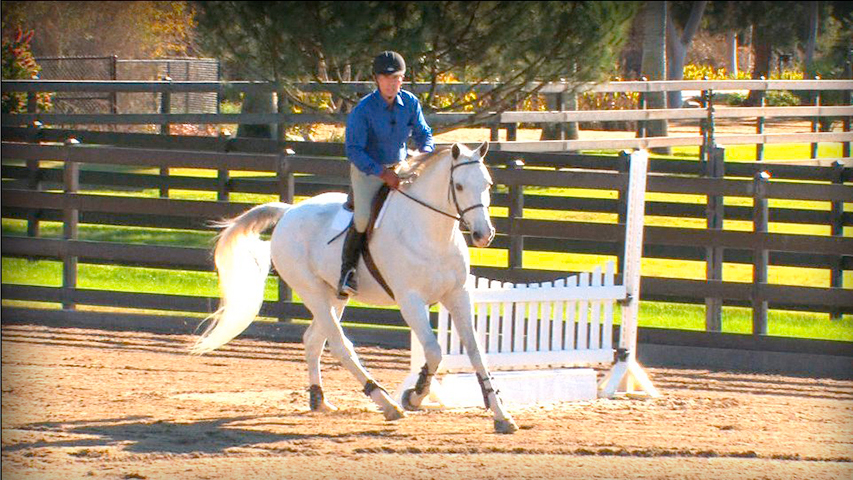Linda Allen
- 13 Sep, 2016
- 0 Comments
- 6 Mins Read
How To Prevent A Horse’s Stride From Getting Too Long On The Approach To A Jump
Photo Credit: Callan Curtis
Panel Experts: Jim Wofford and Linda Allen
Submitted by member: Tanya
I would love some tips about how to prevent your horse from gradually getting longer in his stride when coming to jumps in a forward seat. For example, I find that when I turn the corner to a jump, and if I’m in two-point, I let the horse get longer each stride to the jump. I feel like his hind end trails behind, and I often meet the jump long and weak (or chip). I used to sit up, using a lot of hand and leg to ‘package’ my horse. I would drive his hind end to the jumps. Now I am really trying to change to a forward seat and go ‘with the horse.’ I’m just having trouble keeping the horse’s hind end under, and keeping him in the proper balance to get close to the jump and pat off the ground with power (like Rich Fellers does so well). Not sure if this is a common issue, but I would love some help with it. Thanks 🙂
Answer by Jim Wofford
This is a common problem, when riders first change from always being in a deep three-point to a two-point. Try this exercise; canter on a large circle, put yourself in a two-point, then practice increasing and shortening his stride (ask for very small increments of change at first), all while maintaining a two-point. Cheat a little at first when you bring his stride back to you…put your knuckles on his neck, close your fingers as if you were squeezing water out of a sponge, and close your knees into his shoulders to bring him back. Riders usually make the mistake of closing their heels to slow down and halt. Close your fingers, soften your heels, and squeeze your knees and the outside of your thighs into his shoulders to slow down, then open your fingers and close your heels to increase his stride. Once he gets the idea, you should eventually be able to halt, walk, canter depart, increase to hand gallop, bring him back to canter, and then halt…all while maintaining your two-point. Keep the sessions short at first, as you may find that this exercise requires more fitness than you might have thought. For your reading homework, study Bernie Traurig’s excellent article on this topic in last winter’s Practical Horseman. Click here to view it.
Answer by Linda Allen
To be a competent jumping rider, it is essential to have a position that allows effortless transition between a deep, potentially strong seat to an extremely light, essentially neutral seat—and all degrees between. For jumping, the go-forward aid is almost exclusively your leg, perhaps with an occasional cluck to add emphasis. A driving seat in front of a fence is only used in case of an absolute emergency situation, as it will always result in an uncomfortable connection with the horse when he leaves the ground. If your horse needs a driving seat to get him to go forward, then he needs to work on the basics until he is ready to move forward immediately and reliably from leg aids alone.
I firmly believe that the less the rider needs to ‘do’ in the final couple of strides, the better the jump will be. The rider should set up the approach ahead of time by organizing the precise track, the appropriate pace and degree of impulsion necessary, and by establishing a rhythm that will remain constant to, and after, the fence. Then, perfect or not, do NOTHING other than maintain what you have in the final strides. Over most obstacles, this excludes maximum efforts over large fences, your horse should be able to fine-tune his final preparations and execute the jump on his own. In almost every case, only very experienced riders, who have exceptional feel (developed by jumping literally hundreds of jumps every week on many horses over many years) are able to truly help a horse by changing anything in the last 2-3 strides. More often it results in that terrible miscommunication that we call a “chip.” If this is repeated often enough over all but the tiniest jumps, it usually turns into random or frequent refusals as the horse loses all trust in the rider.
I have found that the rider’s upper body position is of little import, provided that the horse is consistently in front of the rider’s leg and the rider is able to maintain an appropriate, balanced seat until the horse is safely airborne. Shoulders well in front of the hips (the so called American Forward Seat), or shoulders closer to directly over the hips (without driving the horse forward), or somewhere between, is more a matter of aesthetics/personal preference/accepted style for the discipline.
While it is human nature to try to emulate those successful athletes you most admire, don’t fall victim to copying only their most obvious and/or unique mannerisms. These are not what their success result from. Instead search for the oh-so-hard to see subtleties of balance, focus, control, and level of communication between horse and rider. Leave the little quirks—an elbow out, a pivot of the lower leg, or a rather extreme upper body position—to those that have spent years fine tuning those nearly invisible elements of impulsion, balance, and timing.
There is a reason to pursue the middle ground of classical riding: it has proven most effective for nearly every rider, year after year, and decade after decade.
Video Recommendations:
Balance in the Stirrups: The Half-Seat
Bernie Traurig
The Half-Seat is the cornerstone of the American Forward Riding System. In this topic Bernie reiterates just how essential it is to perfect this position.
Running Time: 7 minutes and 58 seconds
Fundamentals of Flatwork – Part 1 – Basic
Bernie Traurig
The first of the series, this video outlines a simple, progressive method of flatwork for all jumping disciplines. It focuses on the training of a young or inexperienced horse with the aim to achieve obedience to light rein and leg aids, and assumes the rider is familiar with the proper techniques of riding and jumping. But you do not have to be a highly experienced or seasoned rider because Bernie’s strategies are clear, straight-forward, classic and timeless. The Basic level highlights his favorite exercises that can be incorporated into anyone’s training program.
Running Time: 46 minutes and 25 seconds
Fundamentals of Flatwork – Part 2 – Intermediate
Bernie Traurig
If you have the Basic level down, you and your horse are ready for more of Bernie’s proven supplemental training techniques. In the Intermediate level, you’ll learn how to put the polish on your performance by blending these potent methods into your everyday training program. You will learn how to build on the fluency with which you and your horse have come to communicate. For most horses, mastering this level will be sufficient to perform well in any show ring.
Running Time: 59 minutes and 6 seconds
Fundamentals of Flatwork – Part 3 – Advanced
Bernie Traurig
The Advanced level further illustrates Bernie’s modern, refined and simplified approach. If your goal is a higher level of performance or to achieve a greater brilliance and quality of gait, this video is for you.
Running Time: 51 minutes and 16 seconds
Have Something You Want to Ask Our Panel of Experts?
Ask The Experts is the ultimate way to get help from the top professionals in the equestrian industry without leaving the comfort of your home. This service is available to Monthly, Annual and Lifetime Members of EquestrianCoach.com.





